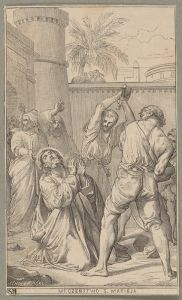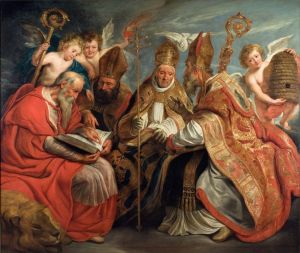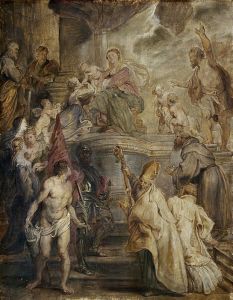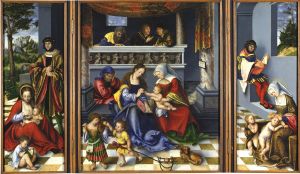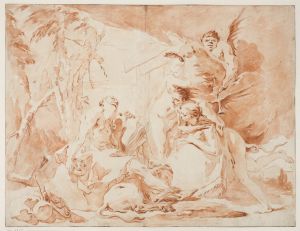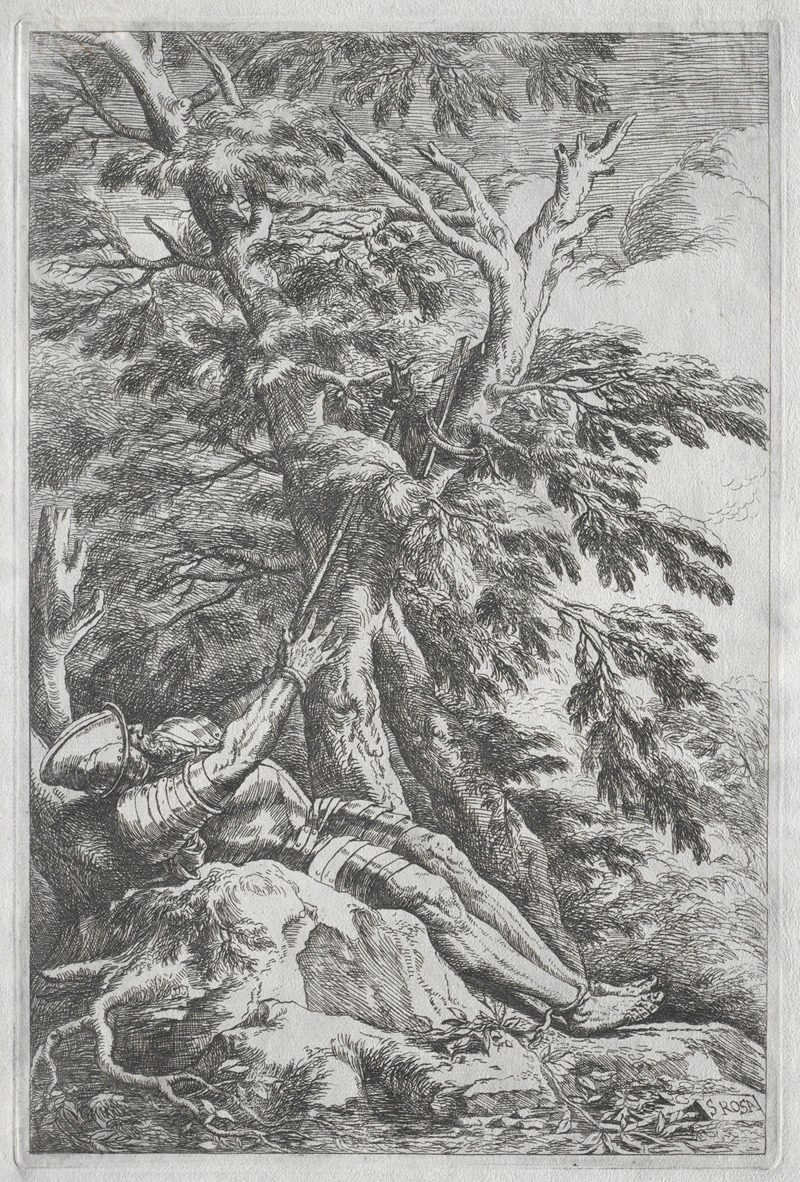
St. William the Hermit
A hand-painted replica of Salvator Rosa’s masterpiece St. William the Hermit, meticulously crafted by professional artists to capture the true essence of the original. Each piece is created with museum-quality canvas and rare mineral pigments, carefully painted by experienced artists with delicate brushstrokes and rich, layered colors to perfectly recreate the texture of the original artwork. Unlike machine-printed reproductions, this hand-painted version brings the painting to life, infused with the artist’s emotions and skill in every stroke. Whether for personal collection or home decoration, it instantly elevates the artistic atmosphere of any space.
"St. William the Hermit" is a painting by the Italian Baroque artist Salvator Rosa. Created in the mid-17th century, this work is a notable example of Rosa's dramatic and expressive style, which often featured intense emotional content and a dark, moody atmosphere.
Salvator Rosa (1615-1673) was an influential figure in the Baroque period, known for his versatility as a painter, poet, and printmaker. He was born in Naples and later worked in Rome and Florence, where he became associated with the Accademia dei Percossi, a group of artists and intellectuals. Rosa's works often depicted historical, mythological, and religious subjects, characterized by their dynamic compositions and powerful use of chiaroscuro.
"St. William the Hermit" portrays Saint William of Maleval, also known as William the Great, a 12th-century hermit and founder of the religious order known as the Williamites. The saint is depicted in a contemplative pose, surrounded by the rugged and desolate landscape that reflects his life of asceticism and solitude. Rosa's use of dark, earthy tones and dramatic lighting enhances the sense of isolation and spiritual intensity.
The painting captures the essence of Saint William's hermitic life, emphasizing his devotion and piety. The saint is shown with traditional attributes such as a book and a skull, symbols of his meditative practices and contemplation of mortality. The rough, unkempt appearance of the saint, with his long beard and simple clothing, underscores his renunciation of worldly comforts and his commitment to a life of penance.
Rosa's depiction of Saint William is both realistic and idealized, blending naturalistic details with a sense of the sublime. The landscape, with its craggy rocks and sparse vegetation, serves as a metaphor for the saint's spiritual journey, suggesting both the physical and emotional challenges he faced. The painting's composition, with the saint positioned slightly off-center and the dramatic play of light and shadow, draws the viewer's eye towards the figure, creating a focal point that emphasizes his spiritual significance.
"St. William the Hermit" is housed in the Museo di Capodimonte in Naples, Italy. The museum, which is one of the most important art galleries in Italy, holds a significant collection of works from the Renaissance and Baroque periods, including several pieces by Salvator Rosa. This painting is an important example of Rosa's ability to convey deep emotional and spiritual themes through his masterful use of composition, color, and light.
In summary, "St. William the Hermit" by Salvator Rosa is a powerful representation of the life and spirit of Saint William of Maleval. Through his dramatic and expressive style, Rosa captures the essence of the saint's asceticism and devotion, creating a work that is both visually striking and spiritually profound.





